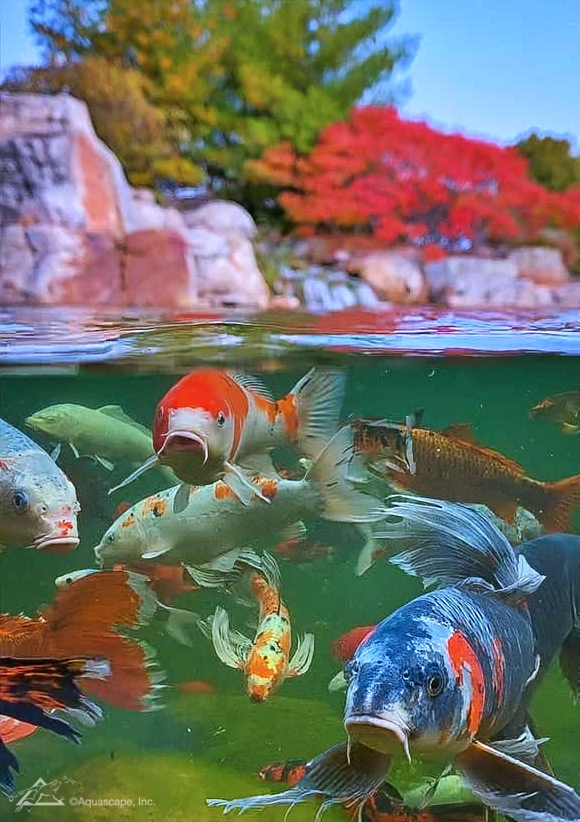Whether you have never owned a pond before or if you are a pond enthusiast with years of experience, these three basic rules will help you create and maintain a healthy habitat for your finned friends. You want your fish to be happy—this makes for a more enjoyable pond experience for you as well. Here is what you need to know:
Maintain a Healthy Population
One of the best ways to keeping your pond healthy and balanced? Don’t have to many fish! We get it—it’s tempting to add colorful koi and goldfish to your water garden, but too much is not a good thing. Too many fish creates excess waste in the pond water, which in turn can cause water quality issues. As a general rule of thumb, pond fish need 10 gallons of water for every inch of their length. So a 10-inch long fish needs 100 gallons. If you have five 10-inch long fish, your water garden should have at least 500 gallons of water. Keep in mind that your fish are going to grow so be sure to under-stock your pond in the beginning.
Fish Need Clean Water
Your pond water should always be clean-smelling and have good clarity. On occasion, the water might be green due to suspended algae, or slightly brown due to tannins. Algae is expected in the spring when the plants haven’t yet reached maturity for the season. Once the plants grow, they consume more nutrients from the water thereby starving algae of food to survive. Ponds in sunny locations experience higher algae growth, but this can be alleviated by shading the pond surface with waterlilies or floating plants like water lettuce and water hyacinth.
Keep in mind, algae isn’t necessarily a bad thing. Your pond fish will eat algae off the rocks in your pond so it’s good to have a little of the green stuff. Too much algae can become unsightly but can be controlled with various water treatments.
If you’re going to keep fish, it’s imperative that your pond have proper filtration. A mechanical skimmer is your first line of defense for removing unwanted debris such as leaves and twigs from the surface of the water. If left to decay in the pond, organic material can cause a host of water issues that could make your fish sick. The skimmer also houses the pump which circulates the water and helps to aerate the pond. A biological filter is positioned opposite the skimmer to create the beginning of a waterfall. This filter uses bacteria to break down pond wastes, converting them into less harmful compounds that can act as aquatic plant fertilizers.
Don’t Overfeed your Fish
Koi benefit from premium prepared fish food, but remember—they also feed on things like algae and insects—it’s part of what created an ecosystem pond. When buying fish food, look for food that contains a high-quality protein along with stabilized multivitamins and probiotics. And most importantly, only feed your fish what they can consume in about three to five minutes. In the summer you can feed them twice per day, but in spring and fall you should only feed them once per day.
Following these three basic rules for keeping koi and pond fish will help ensure that your finned friends have a solid foundation to grow and thrive. You’ll enjoy hours of watching your colorful koi and goldfish swim around the pond, gliding here and there beneath the waterlily pads. It’s a great stress reliever and a perfect activity to enjoy a bit of nature in your own backyard with the family.






